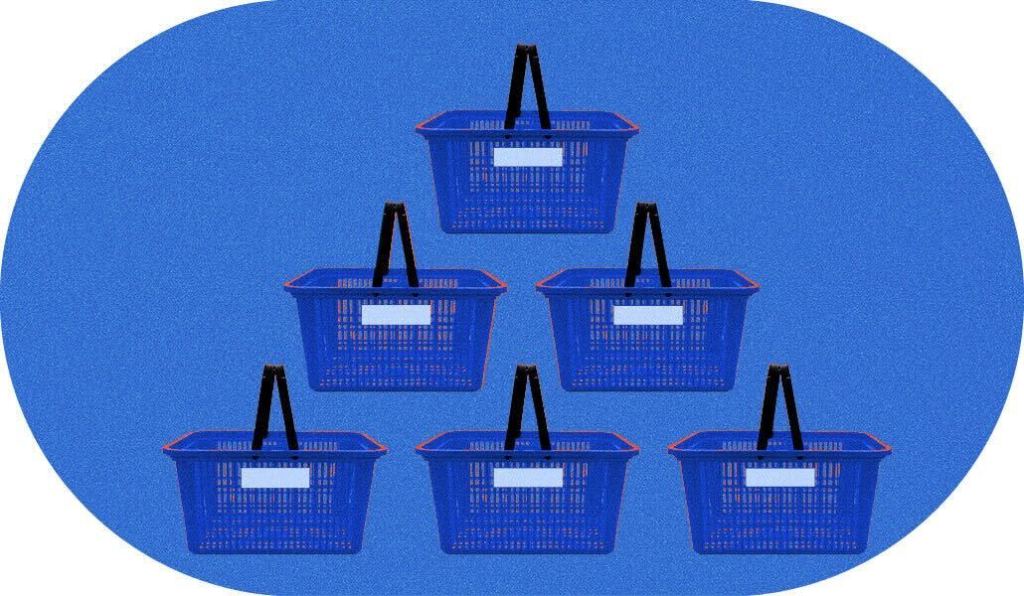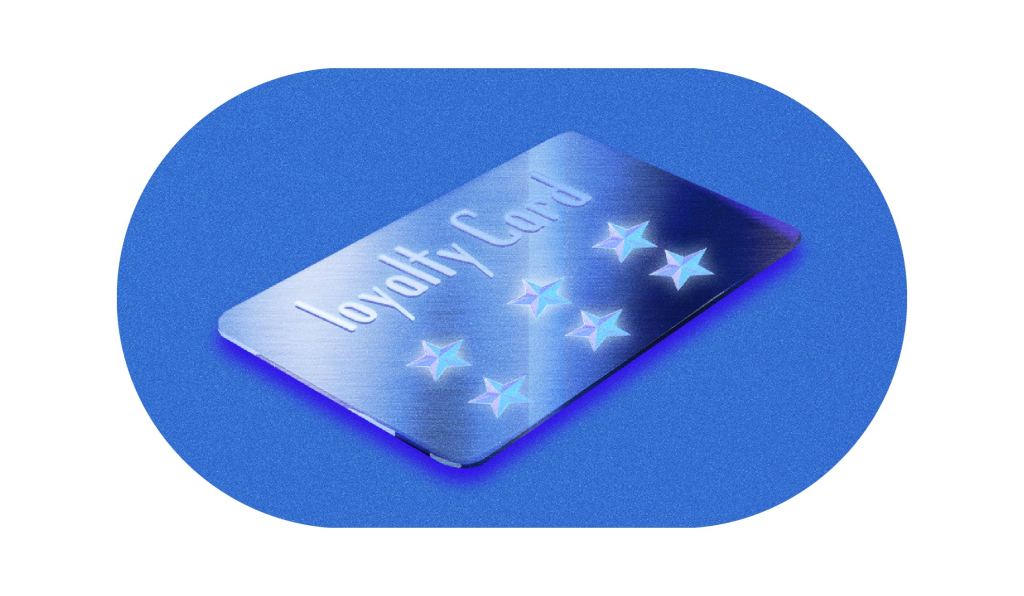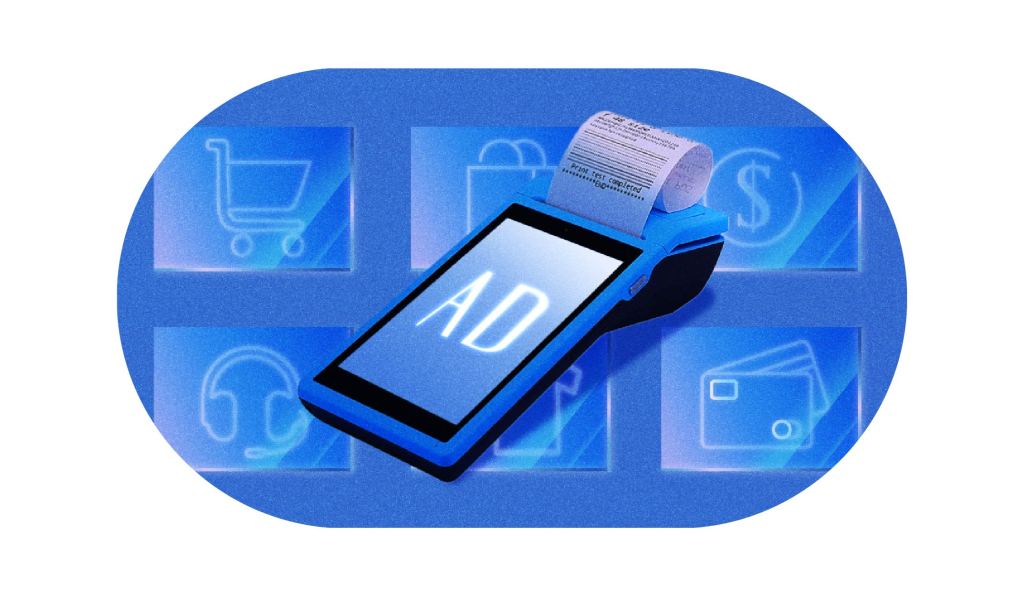This State of the Industry report, sponsored by NCSolutions, explores how brands and agencies use purchase data and other rich signals to target audiences and engage them with relevant and effective messaging.
Facing increased competition for consumer attention and rising costs of digital advertising, CPG marketers are maximizing campaign performance by leveraging data-driven insights to effectively deliver personalized and relevant messaging.
In this new State of the Industry report, Digiday and NCSolutions surveyed 90 brand and agency professionals to evaluate how data is strategically used throughout the sales funnel and across various channels and formats. Our respondents work across several industries, including retail, beauty, food/grocery and healthcare.
The survey results highlight the significant role of purchase data in CPG advertising strategies, supporting both upper- and lower-funnel brand objectives. While marketers leverage diverse data sources and emerging technologies to enhance campaign optimization, many CPG brands face challenges around attribution and measurement to unlock their full potential.
“Given our consumer obsession, we’re always evaluating insights around who our current and growth consumers are, and understanding the accuracy and value of different data sources to target them,” said Amanda Zaky, associate media director at Mars Wrigley. “Understanding the performance of those data sources, audience signals and audiences overall at a faster pace remains a growth area for the industry, especially when that pace isn’t always in line with consumer behavior.”

01
Digital ad budgets and goals
Most brands and agencies use digital advertising for brand awareness campaigns (93%), but that doesn’t tell the complete picture, particularly in the CPG sector.
Respondents also run digital ad campaigns supporting customer acquisitions (79%), customer retention (71%) and — to a lesser extent — discounts/promotions (61%) and product launches/awareness (54%).
“The CPG category is defined by short buying cycles, low price points and minimal product differentiation,” said David Porter, head of ad sales at Warner Bros. Discovery. “As a result, driving repeat purchases and building brand loyalty remain top priorities for CPG marketers.”
This year, 90% of brand and agency respondents intend to grow their advertising budgets year-over-year, with 52% targeting an increase of 11% to 20%. Five percent expect their advertising budgets to remain flat, and only 3% plan to decrease budgets by a modest 1% to 10%.
Analyzing spending across digital channels, most CPG marketers plan to dedicate more of their budgets to social media/influencer marketing (76%), mobile (76%), audio (65%) and retail media networks (64%).
The forecast is a bit mixed for CTV, with 47% increasing spend and 38% keeping budgets flat. For display, digital out-of-home, email and search, a plurality of our respondents expect to keep spending steady though some marketers do expect spending shifts in either direction.
“In 2025, I think we will see an ongoing pursuit by clients to remain focused on marketing effectiveness,” said Jorge Ruiz, global head of marketing science at TikTok. “At TikTok, we have seen our clients across verticals continuously improve their effectiveness journey through sound business outcomes and incrementality measurement.
“In addition, a more common effectiveness trend that we are seeing is in leveraging omnichannel strategies: be it across app, web, retail media networks or even our own Shops commerce destinations.”
02
Retail media strategies
Among the 88% of brand and agency respondents advertising through RMNs, 87% cite brand awareness as one of their primary goals for the channel.
Three-quarters cite increased product sales from the retailer with which they’re advertising as a goal. More than half (53%) aim to increase product sales from other retailers through RMN ads. Customer retention also surpasses customer acquisition as a goal for retail media, 73% to 63%, respectively.
Brands and agencies are using a variety of ads on RMNs, but display ads (87%) are the dominant format.
At least two-thirds of respondents use in-store digital ads (73%), search ads (72%) and social media (67%). Less than half use email or SMS ads (41%) through RMNs.
“Purchase data is some of the most informative data available in the market — that’s why we continue to see the introduction of new types of media such as RMNs,” said Gio Gardelli, vp, DSP data products at Yahoo. “This data goes beyond behavioral and intent; it tells brands what is actually occurring, and where their customers are investing their dollars.
“Working with purchase-based data partners enables brands to get as close to the point of purchase or decision-making as possible.”
03
Data-driven advertising toolkit
To execute their digital campaigns across platforms, marketers rely on robust tech stacks. More than three-quarters of respondents (76%) use a CRM, followed by marketing mix modeling (74%) and analytics platforms (71%). Slightly over a quarter (26%) use a clean room.
Measurement tools such as marketing mix modeling (MMM) and analytics platforms are critical for marketers to acquire the insights needed to implement data-driven campaigns.
At least half of CPG marketers also count social media management tools (69%), ad servers (60%) and AI/machine learning tools (53%) as part of their martech stacks. Other elements that actively store data and enable collaboration and media buying — such as DSPs (49%), CDPs (32%), marketing automation platforms (31%) and data clean rooms (26%) — are also frequently included in marketers’ tech stacks.
When it comes to the data leveraged for campaign targeting and optimization, more than eight in 10 respondents (84%) use engagement metrics, such as clicks and shares. Demographic data (79%) and psychographic data (73%) are also most commonly used for targeting and optimization, ahead of publisher affinity data (59%) and third-party transaction or purchase data (53%).
Taking a closer look at purchase and transaction data, CPG marketers are primarily using first-party product data (74%), such as category or SKU, deterministic purchase data (73%) and shopper data from retailers (72%). Only 9% of respondents report not using any form of purchase data.
“Marketers can access purchase data either directly from retailers or through third-party providers, each offering unique benefits in terms of sources and scale,” said Georgi Georgiev, svp, data partnerships and operations at NCSolutions. “While deterministic data provides insights into shopper behavior at specific retailers, its scope is limited to those ecosystems or campaigns executed there.
“Third-party purchase data aggregates insights from a variety of sources, including retailers, credit card companies, receipt capture and consumer panels,” he said. “When big data is enhanced with machine learning, it can be used both deterministically and modeled to project purchase behavior on every household.”
Given the wealth of data available, 88% of CPG marketers are at least “somewhat confident” they have the right data to determine ROAS on all of their digital campaigns.
“The right data empowers marketers with invaluable insights into consumer buying trends and preferences,” Georgiev said. “High-quality purchase-based data allows brands to target loyal customers, discover new buyers, cross-sell, upsell and re-engage lapsed shoppers.”
04
Targeting and personalization tactics
Reaching target audiences requires that CPG marketers be dynamic and agile.
Among our respondents, the two most prominent tactics to do so are purchase-based targeting (77%) and custom/lookalike audiences (77%). Cross-device targeting (71%), geo-targeting (61%) and publisher affinity (59%) are also widely-used targeting tactics.
“When it comes to audience targeting, traditional demographic and psychographic data take a backseat to purchase behavior insights,” Warner Bros. Discovery’s Porter said. “Purchase data offers actionable intelligence, pinpointing who is most likely to buy and when.”
Artificial intelligence also plays a role in campaign targeting and activation processes, primarily for campaign management automation (77%). More than half of brand and agency respondents use AI for customer journey personalization (61%), programmatic advertising (61%), advanced audience segmentation (59%) and predictive analytics (51%).
Brands and agencies are using personalization tactics throughout the sales funnel, starting with the awareness stage (70%). Personalization is least commonly used during the trial stage (39%) and there is also room for growth in the retention/loyalty stage (42%).
“As AI and machine learning evolve, they’re sharpening data applications and streamlining CTV’s pathway to becoming a fully efficient, performance-driven platform,” said Michael Scott, vp, head of ad sales and operations at Samsung Ads. “Expect more brands to use interactive and engaging ads to deliver conversion, particularly as brands leverage first-party data to execute omnichannel strategies.”
For personalized awareness campaigns, brands and agencies overwhelmingly leverage demographic data (90%) and behavioral data (88%).
More than six in 10 respondents use psychographic data (69%), purchase data (68%) and engagement metrics (64%) to refine their targeting for awareness campaigns. Further down the funnel, behavioral data (84%) and engagement metrics (73%) are the signals primarily fueling audience targeting for loyalty campaigns.

“Demographic and psychographic data serve their purpose for broad-reach, awareness-driving campaigns as the goal is to expand the aperture of the brand’s audience and bring them into the franchise,” said Manish Lulla, managing partner, data and technology consulting at Choreograph. “Not all consumers are created equal — once they are in the franchise, we can understand their value and design optimal targeting strategies based on value rather than like in broad-reach campaigns.
“When it comes to loyalty campaigns, we believe advertisers should access the rich transactional history and purchase behavior data and that should be leveraged to its full potential,” he said. “By understanding the buyer’s affinity to various types of products, frequency of purchase, buy rate, trip frequency and many other factors, brands can truly understand the value of each customer.”
Ultimately, purchase data plays an essential role throughout the entire marketing funnel — including and beyond awareness and loyalty — as it enables brands to engage with consumers more effectively by focusing on actual buying behavior.
“Purchase data enables a seamless, results-driven approach across the entire funnel, helping brands achieve both immediate and long-term success,” said Kristin Barrowclough, vp, product innovation at NCSolutions. “At the top of the funnel, purchase-based targeting helps brands reach category shoppers who haven’t yet bought the brand and can create lookalike audiences to identify likely triers based on attributes of current brand buyers. This approach broadens reach and drives discovery in a way that’s both efficient and impactful.
“At the bottom of the funnel, the focus shifts to retention and loyalty. Purchase data makes it easier to re-engage core customers, drive repeat purchases and strengthen those valuable relationships. Retaining existing buyers is not only more cost-effective but also a proven driver of incremental sales and sustained growth.”
05
Measurement and outcomes
Brands and agencies are measuring the impact of their digital advertising campaigns, online and offline, looking at both big-picture and granular results.
Nearly seven in 10 respondents (69%) cited cost-per-acquisition as one of the most significant KPIs or metrics when measuring digital ad performance and outcomes. CPA edged out brand lift (66%) — including awareness, ad recall, consideration and favorability — and customer retention rate/repeat customer rate (62%).
Reflecting the importance of brand lift, teams are also looking closely at audience reach (53%) and attention (51%). In this context, respondents also place more value on sales lift or incremental sales (52%) than total sales (29%).
“Campaign measurement is vital for knowing what works and what doesn’t,” said Joe Keating, senior analytics director at Hill’s Pet. “This provides insights on the best audience combinations to acquire and retain shoppers as our options change, for better or worse. We plan a range of data-driven scenarios in advance, where possible, and have learned that being as informed as possible helps with flexibility.”
With performance in mind, most CPG marketers (81%) cite social media as the most effective channel for driving sales.
The channel’s effectiveness reflects our previous finding, in which 76% of respondents expect to increase spending on social media. Mobile (67%), retail media networks (60%) and online video (53%) are also among the most effective channels for driving sales.
“CPG marketers need to be focused on real-time ROI and how their media strategy immediately drives sales lift,” said Scott Collins, vp, sales at AudienceXpress. “To help ensure this, they should prioritize the channels and partners that can best deliver targeted audiences at scale, including across the full TV ecosystem; empower them to achieve full-funnel KPIs; and provide consistent, transparent insights during every stage of a campaign.”
06
Leveraging data for campaign optimization
To maximize these digital channels, brands and agencies are working with various stakeholders. More than three-quarters of respondents (76%) have media buying and planning teams primarily responsible for digital ad optimization, followed by data analytics (73%) and ad operations (62%).
These teams are deploying a variety of tactics for campaign optimization, including budget allocation adjustments (76%), audience segmentation (69%), mobile-first design (64%), A/B testing (60%) and in-flight optimization (59%). Among our respondents, targeting and personalization tactics are less commonly used for optimization purposes.
Our respondents are primarily leveraging purchase/transaction data (82%), clicks (79%) and attention/viewability (76%) metrics and data to optimize their digital advertising efforts. Nearly half (49%) are taking store visits and in-store data into account when optimizing digital campaigns.
For instance, Uber Advertising, which engages closely with CPG advertisers, leverages high-fidelity purchaser and location data signals from its billions of global trips for increased ad campaign personalization, precision and real-time driving of business outcomes.
“These signals allow Uber to bring together the best of upper-funnel and lower-funnel strategies for our clients on a global scale,” said Megan Ramm, head of the Americas at Uber Advertising. “Through our Journey Ads product, for example, we are able to deliver an entertaining, surprise-and-delight experience on mobile and then connect it directly to an add-to-cart or purchase on Eats. The power of cross-platform usage and behavior on this global scale is a unique differentiator for our customers and brand partners alike.”

07
Challenges and opportunities
As CPG advertising becomes more sophisticated and consumer behaviors evolve, our brand and agency respondents’ leading challenge isn’t confined to digital channels.
About two-thirds (66%) cited a lack of budget and resources as a challenge impacting their digital advertising. Other significant challenges — such as cross-channel attribution/measurement (57%), brand safety (50%), data privacy/regulatory concerns (49%) and ad fraud/viewability issues (47%) — speak to the current omnichannel landscape and the volume of ads and formats brands compete with.
For some marketers, working with external vendors and collaborators, including purchase data partners, has proven valuable for addressing some of these challenges.
“Working with a purchase-based data partner, like NCS, can help brands maximize ad budgets by providing rich insights into precise elements of their media plan,” said Cameron Moulton, associate director, ad effectiveness at Sirius. “Especially for audio, this is where sales lift data wins as it provides more immediate, granular and actionable insights, whereas media mix modeling relies on historical data including marketing spend and sales performance to determine ROI, so it may not account for real-time changes to deliver precise campaign optimization.
“In selecting the right vendor, brands should consider data privacy, security and how seamlessly the data partner integrates with the brand’s current advertising platforms.”
To tackle some of these challenges around attribution, measurement and other areas, CPG marketers are turning to different channels, tactics and technologies.
The two top opportunities in our survey go hand-in-hand: improved testing, learning and iteration (74%) and advanced analytics/attribution/measurement models (71%). Other leading areas of opportunity for CPG marketers include artificial intelligence/machine learning integration (64%), ad personalization (49%), cross-platform campaigns (46%), retail media networks (41%) and purchase data insights (36%).
As one ad-tech leader explained, CPG brands that leverage purchase data and RMNs together will be well-positioned to succeed in the coming year.
Indeed, partnerships are a throughline for CPG marketers to maximize ad dollars across the digital landscape.
“In 2025, the focus for CPG marketing will remain on data connection and collaboration,” said Marc Cestaro, svp of sales at Infosum. “Marketers will increasingly rely on both first-party and third-party data to deliver personalized shopper experiences, boost efficiency and effectiveness, and foster deeper relationships with customers, retailers and sponsorship partners.
“Advertisers, retailers and media platforms — including walled gardens — each offer unique and valuable insights into consumer behaviors, demographics and purchase journeys,” he said. “The key to success in 2025 lies in bringing these perspectives together in a secure and privacy-conscious manner.”
08
How purchase insights derive value for CPG marketers
Deirdre K. McFarland, Chief Marketing Officer and Chief Communications Officer, NCSolutions
Brands and agencies face numerous challenges, some have been present forever — like limited budgets — and others are still emerging — like the role of AI. That’s the nature of the advertising environment, but there’s another, more positive aspect NCSolutions has long recognized when working closely with its clients.
Challenges often give birth to solutions. In a data-driven environment such as digital advertising, marketers and their partners have a unique ability to understand what drives consumer purchasing behavior. AI and machine learning gives marketers capabilities that weren’t available a decade ago. This technology and data allows teams to assess the impact of advertising on incremental sales faster and more accurately.
This means marketers have a chance to turn their current threats into opportunities. Among the many insights marketers have access to is data on purchase behavior. It’s safe to say many marketers recognize the key role purchase-based targeting plays in crafting their marketing strategies. In fact, in this survey, only 9% said they aren’t using it.
With the right insights, they have the information needed to shift to strategies and tactics that work. As they measure their campaigns, they can determine what’s driving better advertising outcomes and move more budget towards it.
About NCSolutions
NCSolutions (NCS) makes advertising work better. Our unrivaled data resources powered by leading providers combine with scientific rigor and leading-edge technology to empower the CPG ecosystem to create and deliver more effective advertising. With NCS’s proven approach, brands are achieving continuous optimization everywhere ads appear through purchase-based audience targeting and sales measurement solutions that have impacted over $25 billion in media spend for our customers. Visit us at ncsolutions.com to learn more.

Con información de Digiday
Leer la nota Completa > The state of data-driven decision-making for CPG brands







